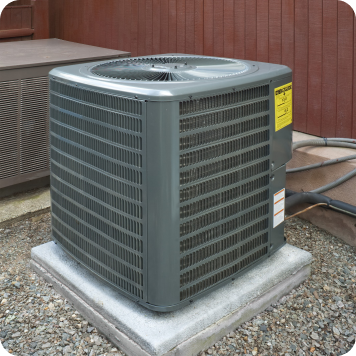Many area households in Gold Canyon, AZ, get their cooling and heating from heat pumps. A heat pump system from CAM Air is among the most efficient solutions available for both heating and cooling. They’re reliable and efficient but like all HVAC systems, they do require seasonal maintenance for optimal performance and long life. If more serious issues do occur, quick repairs are important as they can avoid high electricity use and even higher repair costs. No matter your heat pump needs, our Gold Canyon HVAC technicians can help!
Heat Pumps in Gold Canyon, AZ
As Low As $110 Per Month

Professional Heat Pump System Services
A heat pump system needs a tune-up twice a year. Our customers should schedule cooling maintenance in the spring and heating maintenance in the fall. That approach will lower operating costs, extend the system’s lifespan, and help avoid repairs. Even with proper maintenance, more serious issues can occur over time. Increased electricity consumption is often among the earliest signs of a problem. That’s why we recommend tracking your energy usage by month and year. You should also monitor how your system cycles. Typical heat pumps cycle two or three times an hour for 10 to 15 minutes. Short cycling is often an indication of overheating or a refrigerant leak. Long cycling typically suggests a problem with a thermostat or control board.
If replacing a heat pump system or installing one for the first time, accurate sizing is crucial. An optimal capacity will result in lower costs in the short term and over the long term. To size your unit, an installer will perform a load calculation, such as the ACCA Manual J approach. The next step is to consider energy efficiency. The industry uses SEER to measure cooling efficiency and HSPF to measure heating efficiency. In both cases, the higher the rating, the more efficient the system. You may have to pay more to install a high-efficiency system. That said, it can be worth it due to energy incentives and smaller heating and cooling bills.
- Cold or warm spots
- Spike in electricity usage
- Excessive dust accumulation
- Hard starting and other loud noises
- Unit stuck in either heating or cooling mode

Gold Canyon Heat Pump Team
CAM Air is an HVAC service provider that operates in Gold Canyon and throughout the surrounding areas. Our company provides residential and commercial services, including new heat pump installations and replacements, maintenance, and repairs. For repairs, we offer 24/7 emergency services and can often schedule same-day service. For installations, we provide free estimates and, upon approved credit, financing options. We also deliver excellent customer service, which is evident in our numerous five-star reviews on Google, Facebook, and Yelp.
For heat pumps in Gold Canyon, CAM Air is the HVAC company to trust. Contact us to schedule a service appointment or on-site consultation.